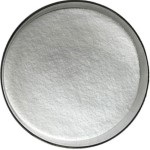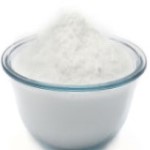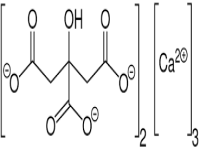Calcium Acetate USP BP Ph Eur FCC Food Grade & Calcium Citrate USP FCC Food Grade Suppliers Exporters, Manufacturers
Calcium Acetate
CAS Number: 62-54-4 anhydrous & 5743-26-0 monohydrate USP BP Ph Eur FCC Food Grade Suppliers Exporters, Manufacturers

Please visit Safety Data Sheet of Calcium Acetate USP BP Ph Eur FCC Food Grade Manufacturers.
Calcium Acetate USP Grade Specifications
C4H6CaO4 --- 58.17
Acetic acid, calcium salt.
CAS 62-54-4.
Calcium Acetate contains not less than 99.0 percent and not more than 100.5 percent of C4H6CaO4, calculated on the anhydrous basis.
Identification: A solution (1 in 20) responds to the tests for Calcium and for Acetate.
pH: 6.3 to 9.6, in a solution (1 in 20).
Water: not more than 7.0%, determined in a 0.7-g specimen.
Limit of fluoride: the limit is 0.005%.
Arsenic: 3 ppm.
Heavy metals: the limit is 0.0025%.
Lead: 0.001%.
Chloride: 0.05%.
Sulfate: 0.06%.
Limit of nitrate: To pass the test.
Limit of aluminum (where it is labeled as intended for parenteral use or for use in hemodialysis or peritoneal dialysis):
Barium (where it is labeled as intended for use in hemodialysis or peritoneal dialysis): the limit is 0.05%.
Limit of potassium (where it is labeled as intended for use in hemodialysis or peritoneal dialysis): the limit is 0.05%.
Limit of sodium (where it is labeled as intended for use in hemodialysis or peritoneal dialysis): the limit is 0.5%.
Limit of strontium (where it is labeled as intended for use in hemodialysis or peritoneal dialysis): the limit is 0.05%.
Readily oxidizable substances: Dissolve 2.0 g of it in 100 mL of boiling water, add a few glass beads, 6 mL of 10 N sulfuric acid, and 0.3 mL of 1 N potassium permanganate, mix, boil gently for 5 minutes, and allow the precipitate to settle: the pink color in the supernatant is not completely discharged.
Calcium Acetate BP, Ph Eur Grade Specifications
C4H6CaO4 --- 158.2 --- CAS 62-54-4
DEFINITION
Calcium diacetate.
Content: 98.0 per cent to 102.0 per cent (anhydrous substance).
CHARACTERS
Appearance: White or almost white, hygroscopic powder.
Solubility: Freely soluble in water, slightly soluble in ethanol (96 per cent).
IDENTIFICATION
A. It gives reaction of calcium.
B. It gives reaction of acetates.
TESTS
pH: 7.2 to 8.2.
Readily oxidisable substances: Dissolve 2.0 g in boiling water and dilute to 100 ml with boiling water, add a few glass beads, 6 ml of 5 M sulphuric acid and 0.3 ml of 0.02 M potassium permanganate , mix, boil gently for 5 min and allow the precipitate to settle. The pink colour in the supernatant is not completely discharged.
Chlorides: Maximum 330 ppm.
Nitrates: Dissolve 1.0 g in water and dilute to 10 ml with the same solvent. Add 5 mg of sodium chloride, 0.05 ml of indigo carmine solution and add with stirring, 10 ml of nitrogen-free
sulphuric acid. The blue colour remains for at least 10 min.
Sulphates: Maximum 600 ppm.
Aluminium: Maximum 1 ppm.
Arsenic: Maximum 2 ppm.
Barium: Maximum 50.0 ppm.
Magnesium: Maximum 5.00 × 100 ppm.
Potassium: Maximum 0.10 per cent.
Sodium: Maximum 0.50 per cent.
Strontium: Maximum 5.00 × 100 ppm.
Heavy metals: Maximum 20 ppm.
Water: Maximum 7.0 per cent.
Calcium Acetate FCC Food Grade
Ca(C2H3O2)2 Formula weight 158.17
INS: 263 CAS: 62-54-4
DESCRIPTION
Calcium Acetate occurs as a fine, white, bulky powder. It is freely soluble in water and slightly soluble in alcohol.
Function: Buffer; stabilizer; firming agent.
REQUIREMENTS
Identification: A 1:10 aqueous solution gives positive tests for Calcium and for Acetate.
Assay: Not less than 99.0% and not more than 100.5% of Ca(C2H3O2)2, calculated on the anhydrous basis.
Chloride: Not more than 0.05%.
Fluoride: Not more than 0.005%.
Lead: Not more than 2 mg/kg.
Sulfate: Not more than 0.1%.
Water: Not more than 7.0%.

Please visit Hazard Statement of Calcium Acetate USP BP Ph Eur FCC Food Grade Suppliers.
Calcium Citrate
CAS Number: 5785-44-4 (tetrahydrate) USP FCC Food Grade Suppliers Exporters, Manufacturers

Please visit Safety Data Sheet of Calcium Citrate USP FCC Food Grade Manufacturers.
Calcium Citrate USP Grade Specifications:
C12H10Ca3O14-4H2O --- 570.49
1,2,3-Propanetricarboxylic acid, 2-hydroxy-, calcium salt (2:3), tetrahydrate;
Calcium citrate (3:2), tetrahydrate CAS 5785-44-4
DEFINITION
Calcium Citrate contains four molecules of water of hydration. When dried at 150C to constant weight, it contains NLT 97.5% and NMT 100.5% of Ca3(C6H5O7)2.
IDENTIFICATION
A.
Analysis: Dissolve 0.5 g in a mixture of 10 mL of water and 2.5 mL of 2 N nitric acid. Add 1 mL of mercuric sulfate TS, heat to boiling, and add 1 mL of potassium permanganate.
Acceptance criteria: A white precipitate is formed.
B.
Sample: 0.5 g of Calcium Citrate
Analysis: Ignite completely the Sample at as low a temperature as possible, cool, and dissolve the residue in dilute glacial acetic acid (1:10). Filter, and add 10 mL of ammonium oxalate to the filtrate.
Acceptance criteria: A voluminous white precipitate that is soluble in hydrochloric acid is formed.
ASSAY
Procedure
Sample solution: Dissolve 350 mg of Calcium Citrate, previously dried at 150C to constant weight, in 12 mL of 0.5 M hydrochloric acid, and dilute with water to about 100 mL.
Analysis: While stirring the Sample solution, add 30 mL of 0.05 M edetate disodium from a 50-mL burette. Add 15 mL of 1 N sodium hydroxide and 300 mg of hydroxy naphthol blue and continue the titration to a blue endpoint. Each mL of 0.05 M edetate disodium is equivalent to 8.307 mg of calcium citrate (Ca3&(C6H5O7)2).
Acceptance criteria: 97.5% to 100.5% on the dried basis
Lead: To pass the test. --- NMT 10 ppm
Limit of Fluoride: To pass the test. --- NMT 0.003%
Limit of Acid-Insoluble Substances:
Sample solution: Dissolve 5 g of Calcium Citrate by heating with a mixture of hydrochloric acid and water (10:50) for 30 min.
Analysis: Filter, wash, and dry at 105C for 2 h the residue so obtained.
Acceptance criteria: The weight of the residue is NMT 10 mg (0.2%).
Loss on Drying: Dry a sample at 150C for 4 h: it loses from 10.0% to 13.3% of its weight.
Packaging and Storage: Preserve in well-closed containers.
Calcium Citrate FCC Food Grade Specifications
Tricalcium Citrate
CH2(COO)C(OH)(COO)CH2COO2Ca3
Ca3(C6H5O7)2-4H2O Formula weight 570.50
INS: 333 CAS: 5785-44-4
DESCRIPTION
Calcium Citrate occurs as a fine, white powder. It is very slightly soluble in water, but it is insoluble in alcohol.
Function: Sequestrant; buffer; firming agent.
REQUIREMENTS
Identification:
A. Dissolve 500 mg of sample in 10 mL of water and 2.5 mL of 1.7 N nitric acid, add 1 mL of mercuric sulfate, heat to boiling, and then add potassium permanganate TS. A white precipitate forms.
B. Completely ignite 500 mg of sample at as low a temperature as possible, cool, and dissolve the residue in a mixture of 10 mL of water and 1 mL of glacial acetic acid. Filter, and add 10 mL of ammonium oxalate to the filtrate. A voluminous, white precipitate forms that is soluble in hydrochloric acid.
Assay: Not less than 97.5% and not more than 100.5% of Ca3(C6H5O7)2 after drying.
Fluoride: Not more than 0.003%.
Lead: Not more than 2 mg/kg.
Loss on Drying: Between 10.0% and 14.0%.

Please visit Hazard Statement of Calcium Citrate USP FCC Food Grade Suppliers.
Calcium Acetate CAS Number 62-54-4 anhydrous & 5743-26-0 monohydrate & Calcium Citrate CAS Number 5785-44-4 (tetrahydrate) Supplier Exporter, Manufacturer:
Annie Chemie P Ltd
Mumbai 4000010, INDIA
With Agents and offices in UAE, USA, Europe.
e-mail: info@anniechemie.com
Copyright and Usual Disclaimer is Applicable.
May 30, 2025
Exporters to USA, Canada, UK, Europe, UAE, Nigeria, Algeria, Turkey, Mexico, Brazil, Chile, Argentina, Australia, Dubai etc.
Perfection is made up of small things and that is a big thing.
